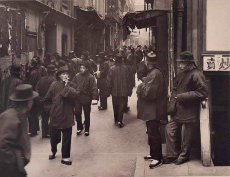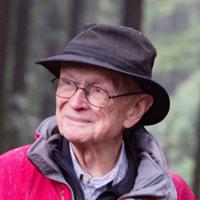
In 2003, when avian flu was just emerging in a couple of Korean poultry farms, American writer Marilyn Chase published The Barbary Plague: The Black Death in Victorian San Francisco. Reading it recently, I thought it pointed to the same factors that are at work in the impending H5N1 pandemic.
The first of these factors is old-fashioned medical ignorance. When the first cases of plague broke out in San Francisco's Chinatown in 1900, most doctors didn't even know the vector: rat fleas.
The plague bacillus had been isolated and identified in Hong Kong only six years earlier. Alexandre Yersin used advanced techniques to identify what became known as Yersinia pestis. Most California physicians considered bacteriology a lot of high-tech mumbo jumbo. They also ignored the recent Australian finding of plague bacilli in the stomachs of rats.
Doctors knew that rats could carry plague, but not that they could transmit it via fleas to humans-even though dead rats had been a signature of bubonic plague since the Black Death of the 14th century.
Today, our ignorance is more sophisticated: we can read the genes of the influenza virus, we can even revive the H1N1 virus that caused the Spanish flu pandemic of 1918-19, but we can't predict the time or manner of H5N1's mutation into a truly deadly disease.
Racism redux?
The second factor is racism. Race relations in San Francisco a century ago were (by our standards) appalling. Whites considered the Chinese not only innately filthy and degraded, but far more vulnerable to plague than whites. In a state where politicians got elected on a White California platform, it was hard to muster the will to confront a disease afflicting only Chinese.
For their part, the Chinese were terrified of the white majority, and especially of white doctors. They regarded routine autopsies of plague victims as a horrible desecration, and soon began smuggling sick persons (and corpses) out of the city. As a result, medical authorities never knew just how many Chinese died of the plague (or recovered from it).
Not until a new public-health boss, Rupert Blue, took over the plague campaign, did the Chinese begin to cooperate. He got results by respectful treatment of patients and the whole community, and by astute use of a good translator.
Today's racism is also more sophisticated. But we still tend to equate Asian diseases with diseased Asians. In 2003, white Canadians were even avoiding Chinese restaurants for fear of catching SARS. Jean Chretien and much of his cabinet had to chow down in public on mushu pork and egg fuyung, just to revive the industry.
An undercurrent of racism affects western attitudes towards China's current troubles with avian flu, as well. Among flu watchers, it's often taken for granted that the Chinese are suppressing news of avian flu breakouts among humans and poultry, alike. Computer-translated reports from Chinese-language chat rooms are taken as hard intelligence. So are reports from Boxun News-an expatriate-Chinese website in the US that sometimes offers vague stories of outbreaks in unnamed villages.
Art of the cover up
Ironically, San Francisco politicians were masters of the art of the cover up. When the first cases broke out, the city's crooked mayor and the equally crooked state governor loudly denied that plague had arrived. Not only the media cooperated; so did state-appointed medical authorities, who fought the federal health experts every step of the way. And the very wealthy business leaders of San Francisco joined in.
The politicos of 1900 understood perfectly well what "transparency" would mean for California's economy. If they admitted that bubonic plague was loose in the city, California's major port would be shut down. The whole state could be quarantined.
Even so, word leaked out and the rest of the country (not to mention Canada and Mexico) was infuriated and suspicious. It took enormous political pressure-plus a growing number of white plague victims-to get the state and city governments to cooperate.
If 1900 is any indicator, the cover up is an instinctive political response to anything that's bad for business. The Chinese (and the Vietnamese and Indonesians and Thais) may be covering up human cases of H5N1. But they are less likely to enjoy the support of their own medical people, business leaders, and media. Cover ups are themselves far worse for business than transparency.
The public-health solution
In 1900, Rupert Blue was working for a naval organization, the US Marine Hospital Service. His job was essentially to stop diseases from moving off ships into American harbours. When plague came ashore anyway, he was caught up in what today we would call "mission creep." His mission crept eventually into the modern US Public Health Service.
That was because one step led to another: filthy conditions in Chinatown encouraged rats, which then migrated across the city to unsanitary slaughterhouses, working-class homes, and a neglected shoreline. Some wanted to simply burn down Chinatown altogether; Blue managed to rebuild it, putting in concrete rat-proof basements and blacktopping Dupont Street. He waged a relentless war against the rats (bounty hunters got up to 50 cents a rat).
Having won a kind of victory in 1905, Blue was transferred out. But he was soon back. After the great earthquake and fire of 1906, millions of rats flourished in the ruins and plague again broke out.
Only by becoming a master of public relations, and by creating a public-health service, could Blue eventually end bubonic plague in San Francisco. (The cleanup he oversaw also reduced other diseases by up to 75 percent.)
For his efforts, he became surgeon general, a position he held to the end of World War I. Blue had to battle the Spanish influenza, and then to cope with the creation of veterans' hospitals when the casualties came home.
Surprisingly, as early as 1915, Rupert Blue was also an advocate for a national health-insurance program. Thanks to his successes in beating plague, and in building a real public-health service, he was seriously listened to. He was the only man to serve simultaneously as both surgeon general and as president of the American Medical Association. National health insurance, he said, was "the next great step in social legislation."
Public-health doctors agreed. Those in private practice did not. Once Blue was dropped from the surgeon general post, national health insurance became a dream for Canada and not for the US.
A system in decay
San Francisco endured a decade of the bubonic plague because its health policy was essentially "every man for himself, and plague take the Chinaman." That policy is evidently back in favour. Today, American flu bloggers who are also physicians and scientists, are loud in their denunciations of the underfunding and neglect of the US public-health system. The Bush administration implicitly agrees, if only because its flu plan amounts to downloading the job on to state and city governments.
For all our medical and technological advances in the past century, over 40 million Americans still lack medical insurance. And when the pandemic comes, it will not be a matter of a Chinese labourer or a Japanese hooker suddenly dying in some sordid back room. It will be a matter of scores, then hundreds, then thousands of people seeking help from a system that has been as studiously neglected as it was in San Francisco a hundred years ago.
Crawford Kilian, a frequent contributor to The Tyee, follows avian flu on his blog H5N1. ![]()















Tyee Commenting Guidelines
Comments that violate guidelines risk being deleted, and violations may result in a temporary or permanent user ban. Maintain the spirit of good conversation to stay in the discussion.
*Please note The Tyee is not a forum for spreading misinformation about COVID-19, denying its existence or minimizing its risk to public health.
Do:
Do not: